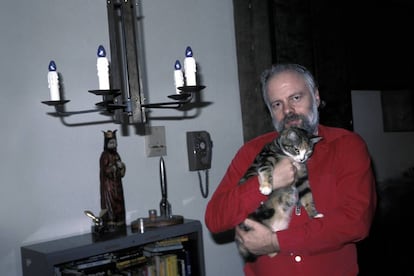The parallel universes of a sci-fi visionary named Philip K. Dick
Scientists scoffed when physicist Hugh Everett published his Many-Worlds Interpretation of quantum mechanics in 1957, but a certain science-fiction author took note

American literary critic Anthony Boucher (1911-1968) once said that science fiction challenges readers to ask, “what if?” Thus, a sci-fi story becomes a game where everything depends on the fulfillment of a condition. When this happens – when the condition is fulfilled – new scenarios and new conflicts can develop in the story. So every time we ask ourselves that question, we pose a hypothesis that is as literary as it is scientific: the hypothesis of parallel universes.
To understand the relationship between the science fiction genre and the Many-Worlds Interpretation, let’s turn to two men – a scientist and a writer. The scientist is Hugh Everett III (1930-1982), a physicist who developed the notion of parallel universes based on an original interpretation of quantum mechanics. He proposed that a pre-formulated theory should be the basis of scientific measurement, quite the opposite of the traditional scientific process in which measurement preceded and determined the theory. But quantum particles do not behave normally, so quantum phenomena and their atomic dynamics cannot be measured by the Newtonian mechanics traditionally applied to the universe.
When Hugh Everett published “Relative State Formulation of Quantum Mechanics” in the Reviews of Modern Physics scientific journal (Volume 29, Issue 3, July - September 1957), his theory that there are many worlds existing in parallel at the same space and time as our own sounded like fantasy fiction to a skeptical scientific world.
While scientists scoffed for more than a decade after Everett published his theory, someone else entered the scene. His name was Philip K. Dick, a scruffy beatnik writer who tramped around Berkeley (California) looking for ways to describe this alternative reality – the one hiding behind our visible reality.

In one of Dick’s stories, the characters living in a small American town in the 1950s inhabit a kind of theme park that is on exhibition in a 23rd century museum. However, the 1950s people cannot see the museum visitors who examine them through a complex viewing system, nor do they know that these visitors are from the 23rd century. This story and others by Dick popularized and validated Everett’s theory of parallel universes among sci-fi fans.
However, the Dick story that captivated the world with its “what if?” question is The Manin the High Castle, a 1962 novel that asks, “What if the Allies had lost World War II?” It depicts a parallel universe and alternate history where the Axis powers of Nazi Germany and the Empire of Japan rule the world after their victory in World War II. North America is divided in two, with the Germans ruling the eastern United States and the Japanese ruling the western states.
The Man in the High Castle is an original and approachable illustration of Everett’s parallel universe theory that reveals how the author and scientist were both free thinkers, a freedom only limited by one’s own imagination.

Tu suscripción se está usando en otro dispositivo
¿Quieres añadir otro usuario a tu suscripción?
Si continúas leyendo en este dispositivo, no se podrá leer en el otro.
FlechaTu suscripción se está usando en otro dispositivo y solo puedes acceder a EL PAÍS desde un dispositivo a la vez.
Si quieres compartir tu cuenta, cambia tu suscripción a la modalidad Premium, así podrás añadir otro usuario. Cada uno accederá con su propia cuenta de email, lo que os permitirá personalizar vuestra experiencia en EL PAÍS.
¿Tienes una suscripción de empresa? Accede aquí para contratar más cuentas.
En el caso de no saber quién está usando tu cuenta, te recomendamos cambiar tu contraseña aquí.
Si decides continuar compartiendo tu cuenta, este mensaje se mostrará en tu dispositivo y en el de la otra persona que está usando tu cuenta de forma indefinida, afectando a tu experiencia de lectura. Puedes consultar aquí los términos y condiciones de la suscripción digital.










































